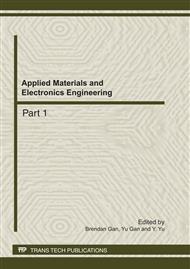p.401
p.405
p.409
p.414
p.418
p.423
p.428
p.433
p.439
The Prediction of High-Speed Landslide Movement and Simulation of Generated Impulsive Wave by SPH Method
Abstract:
A sliding block model is developed for predicting the runout of high-speed landslides, which couple with SPH method (Smoothed Particle Hydrodynamics) to simulate impulse wave. This model adopts the limit equilibrium analysis approach to simulate the whole travel process of the soil mass from the onset of the landslide. The submarine landslide produces highly unsteady and rapidly varied flows, so it was very complicated by fixed grid numerical simulations. The SPH method is a meshfree particle-based Lagrangian method. A sample test is given which shows the impulsive waves generated by high-speed landslide can be reproduced well.
Info:
Periodical:
Pages:
418-422
Citation:
Online since:
October 2011
Authors:
Price:
Сopyright:
© 2012 Trans Tech Publications Ltd. All Rights Reserved
Share:
Citation:


